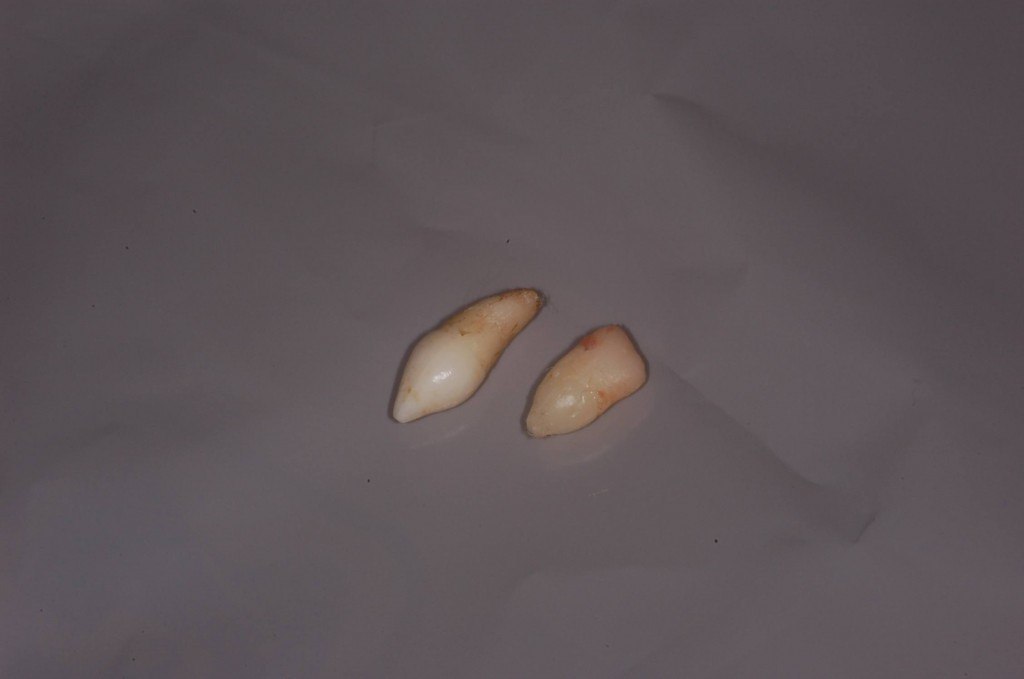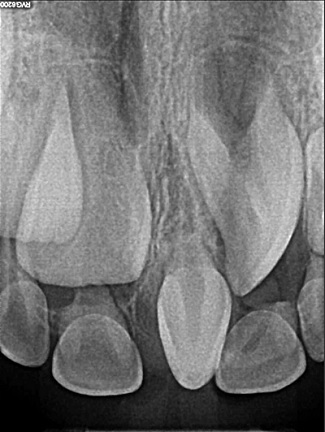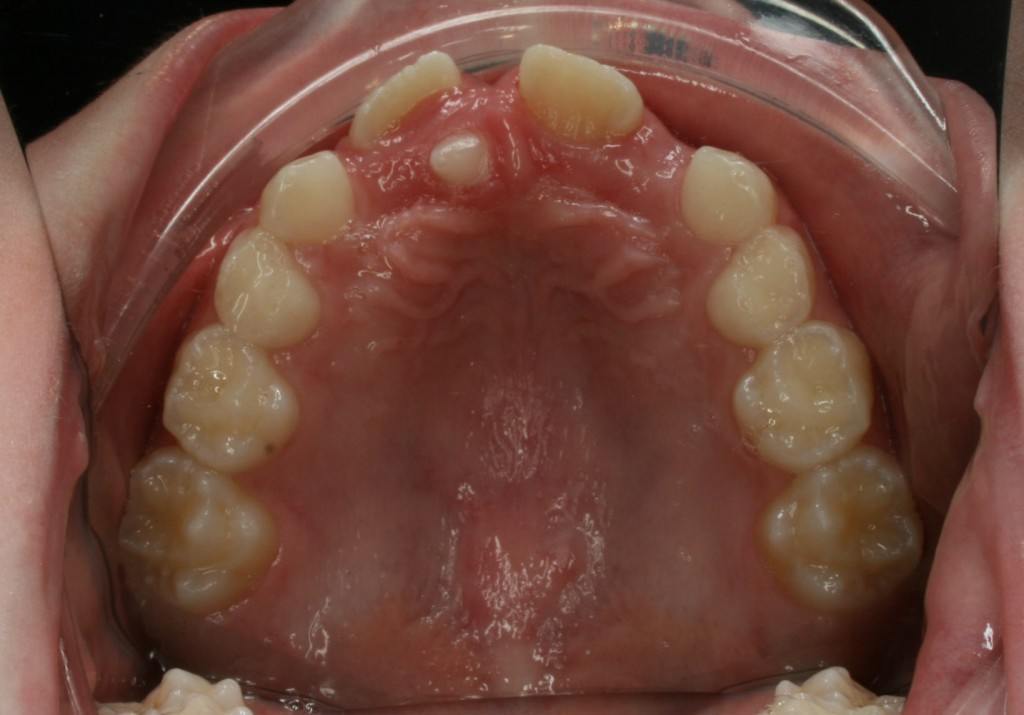Mesiodens – supernumerary teeth (hyperdontia)
Mesiodens is the most common supernumerary tooth. If it erupts into the mouth it will look like a small fang in between the middle two teeth on top.
What is the mesiodens?
It is an accessory tooth that is located in between the two central incisors (basically right in the middle). Many of these teeth never erupt into the mouth but usually cause some sort of issue with the permanent teeth. We often remove them for esthetic reasons and or for orthodontic treatment.
How rare is the mesiodens?
Individuals with supernumerary teeth (hyperdontia) are rare but most dentists will have seen many in a career. The studies indicate from .1%-3.8% of the population have supernumerary teeth (based on a Caucasian population). Of those around 90% are in the pre-maxilla (meaning they are likely mesiodens). Therefore, occurrence of the mesiodens is likely around 1-2%.
Other supernumerary teeth
The most common supernumerary teeth, in order of frequency, are the mesiodens, maxillary fourth molars, maxillary paramolars, mandibular premolars, maxillary lateral incisors, mandibular fourth molars, and maxillary premolars. There exists many difficult to deal with cases of supernumerary teeth.

How often do dentists see these?
Most dentists will have x-rays showing supernumerary teeth and an orthodontist, oral surgeon, or pediatric dentist will have plenty of examples of individuals with all kinds of extra teeth. Here are a few we have found in our office.


What do we do about these supernumerary teeth?
We will usually try to get the teeth if we think that we are going to cause an issue. They often will cause a problem but that is not always the case. Some adults will have one and will not know about it even though they regularly see the dentist. The x-rays we take sometimes do not show them well, thus the dentist can overlook it.




